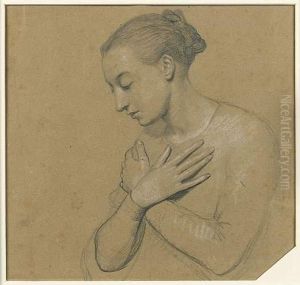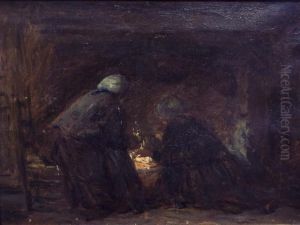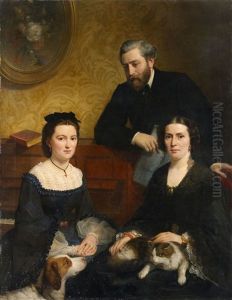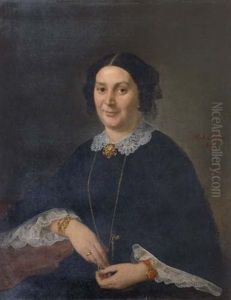Alphonse Colas Paintings
Alphonse Colas was a French artist, born in Lille in 1818 and passing away in 1887, whose work primarily spanned the 19th century, a period rich in artistic evolution and innovation in Europe. His contributions to the art world, while perhaps not as widely recognized as some of his contemporaries, still hold significance within the realms of painting and printmaking, reflecting the stylistic shifts and cultural currents of his time.
Colas was trained in the fine arts at the École des Beaux-Arts in Paris, an institution that was central to the artistic developments in France during this era. The school was known for its rigorous training in classical art techniques, yet it was also a place where the seeds of modern artistic movements were sown. Colas, like many artists of his generation, was influenced by Romanticism, a movement that emphasized emotion and individualism, as well as a reverence for nature. However, he was also exposed to the burgeoning Realist movement, which sought to depict subjects as they were, often focusing on the lives of ordinary people and the working class.
Throughout his career, Alphonse Colas produced a body of work that included both paintings and engravings. His engravings are particularly noted for their detail and sensitivity, capturing the textures and subtleties of the natural and human-made worlds with precision. These works often reflect the Romantic interest in landscape and historical subjects, imbued with a sense of drama and emotional depth. On the other hand, his paintings, though less documented, contributed to the visual culture of the time, portraying scenes with a keen eye for composition and color.
Colas' artistic output was part of the larger tapestry of 19th-century French art, which was marked by a series of stylistic evolutions and the emergence of movements that would lay the groundwork for modern art. While he may not have achieved the fame of contemporaries such as Eugène Delacroix or Gustave Courbet, his work nonetheless provides valuable insight into the transitional period of French art, where the lines between Romanticism and Realism were both blurred and contested.
Despite the relative obscurity of Alphonse Colas in the broader art historical narrative, his contributions to the fields of painting and engraving during the 19th century remain noteworthy. His dedication to his craft and his ability to capture the essence of his subjects make his work a fascinating subject for those interested in the nuances of this pivotal period in art history. Colas' legacy, though subtle, is a reminder of the richness and diversity of artistic expression during a time of profound change in the art world.



